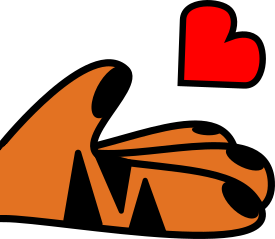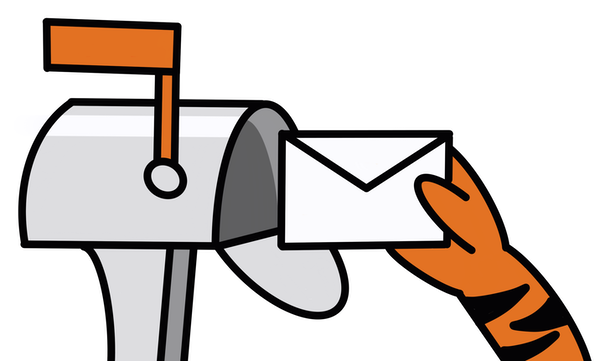In the Pride Alliance archives in Mudd Library, amid serious letters, meeting minutes and Pride rally posters, there is a Hallmark card.
It is probably there by accident — a short, friendly, handwritten note from one member of the organization to another. But if the history of gay life at Princeton were a novel, it would be something an attentive reader might consider a symbol.
"A friend is someone who knows all about you and loves you just the same," the card says, with a picture of Snoopy and Woodstock embracing.
Roots
In a way, that is how the organization now known as Princeton Pride Alliance began — with the idea that all students at Princeton should be embraced along with their sexual orientation.
In May 1972, Arthur Eisenbach '74 placed a classified ad in the 'Prince' that read, "Closet Queens Unite!" About 10 students responded.
An opinion piece, written shortly thereafter by S. James Elliott '72, echoed the ad, calling for "gay liberation" on campus.
Thirty years later, the gay community at Princeton still has its share of battles. But they are less uphill than when the group started.
As the Pride Alliance prepares for Pride Week, which starts Monday, they celebrate not only their present accomplishments but also the history of their struggle.

It was in September 1972 that the Gay Alliance at Princeton, the first official homosexual association, met with a showing of about 25 people. Eisenbach and Judith Schaeffer '74 were its founders.
GAP's goals were, at first, primarily to support and provide social activities for the homosexual members of the Princeton community. In May 1973, GAP sponsored a gay dance that turned out to be the biggest in New Jersey until that date. The New York Times and CBS came to campus to cover the event, but the 'Prince' made no mention of it.
In the latter half of the '70s the energy behind the movement slackened. When Associate Dean of Religious Life Sue Anne Steffey Morrow arrived in 1981 from Columbia University's Union Seminary, she said she looked around campus and thought, "Where are the gay and lesbian students?"
"At that point, GAP was a small group of men that met at 10 p.m. on Mondays here, in Murray-Dodge, in the basement," Morrow said. "Not quite the closet, but the back corner of a dark basement."

Morrow made improving gay rights on campus one of her missions.
"I have a very strong sense that social justice and religious faith go hand in hand," she said. "Who I am as a religious witness propels me to seek justice for those on the fringes."
In Morrow's opinion, gay and lesbian students in 1981 were on the fringes.
Revitalization of the movement
In 1982, a group of lesbians established The Gay Women, which later became the Lesbian and Bisexual Task Force.
In 1985, because of the progressive efforts of then-Provost Neil Rudenstine, Morrow said, the University added sexual orientation to its nondiscrimination policy.
"It was the single most important change [for gay rights] that Princeton made because once that was in place, we had a foundation for all the other changes," Morrow said. "That policy legitimized all the changes that took place and that continue to take place."
When classics professor Daniel Mendelsohn GS '94 came to the University as a graduate student in 1986, he encountered some of the malaise that Morrow was working to dispel.
"[GAP] was pretty spiritless," he said. "A kind of half-hearted lonely hearts club."
Mendelsohn and a handful of other graduate students in what had then become GALAP — the Gay and Lesbian Alliance of Princeton, a combination of GAP and LBTF — had had undergraduate experiences at schools with more active gay populations.
Surprised by the lack of a gay social life at Princeton, they set out to revitalize the gay movement on campus.
In 1989, they planned the first Gay Pride Week, centered around Oct. 11, National Coming Out Day. The activity for that day, they decided, would be the University's first Gay Jeans Day.
"It turned out to be the most divisive thing, probably, since the Vietnam protests," he said. "I thought it was very healthy. It brought out things simmering . . . that was the point."
Beginning soon thereafter, Morrow said, there was a "slow, steady growth in strength of the undergraduate community."
Mendelsohn said gay rights will always be pertinent at Princeton.
"Gay awareness is always an issue on college campuses," he said, "because [college] is the first time students seriously begin to deal with sexuality as adults."
GALAP was renamed Lesbian- Gay-Bisexual Alliance, then Lesbian-Gay-Bisexual-Transgender Alliance and finally in 1999, to be all-inclusive, the Princeton Pride Alliance.
The religious life and student life offices hired graduate students as part-time interns for GALAP. In 1994, the Office of the Dean of Undergraduate Students made LGBT concerns coordinator a full-time post, providing continuity for the group while student leaders come and go.
Presently, the Pride Alliance holds an awareness week in October, with the now-annual Gay Jeans Day, a film festival called Queer Articulations and a Pride Week in April, this year beginning on Monday.
Opposition and accomplishment
Over the years, the gay pride movement at Princeton has accomplished much. After the addition of sexual orientation to the University's non-discrimination policy, former President Shapiro announced in 1991 that benefits would be extended not only to spouses but also "domestic partners."
In 1998, the University began ceremonies of "holy union" in the University Chapel for same-sex couples.
Things are not perfect. The Pride Alliance, under all its various names, has always faced opposition, but less, it seems, as time goes on.
When the GAP was first given $383 of University funding in 1972, 200 students signed a petition for a referendum to retract the funding. They eventually dropped the effort because, ironically, the referendum would have cost too much.
In 1976, the rooms of two GAP leaders were vandalized, and a GAP banner was taken. In 1979, gay students were attacked in the student pub in Chancellor Green.
By the time Mendelsohn was a campus activist, he said, the abuse manifested itself mainly in vandalism of GALAP posters and harassing phone calls.
Mendelsohn said members of the Pride Alliance report that now, the phone calls they receive in the middle of the night come not from prank callers, but from "closeted straight boys" asking for help.
The change, Mendelsohn suggested, is a mark of how much the status of gays on campus has changed.
"It's not great for a lot of undergraduates still," he said. "But it's a hell of a lot better than it used to be."
This series will run April 8,10,12,15. On Monday, LGBT and athletics at Princeton.







